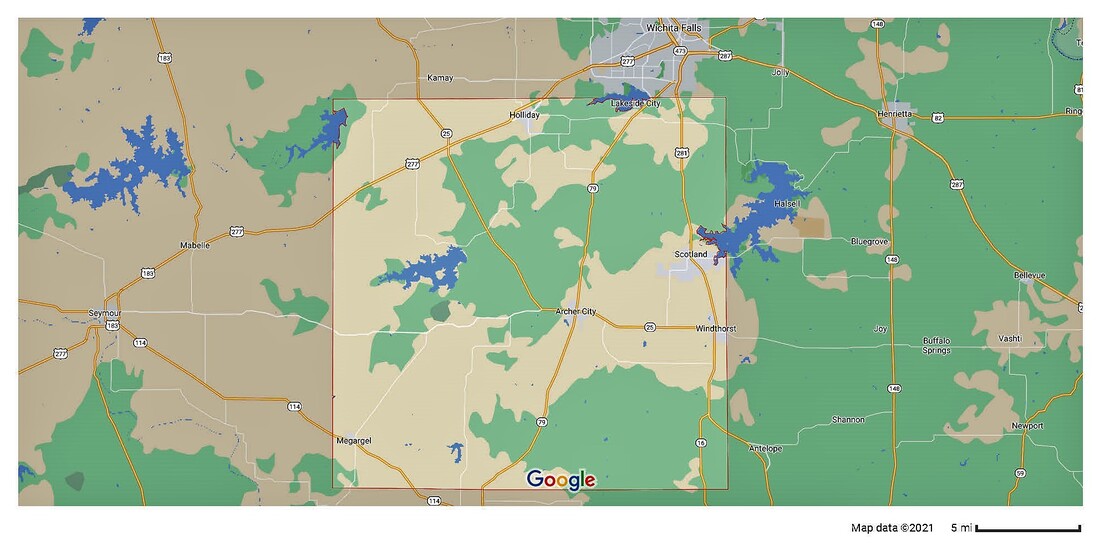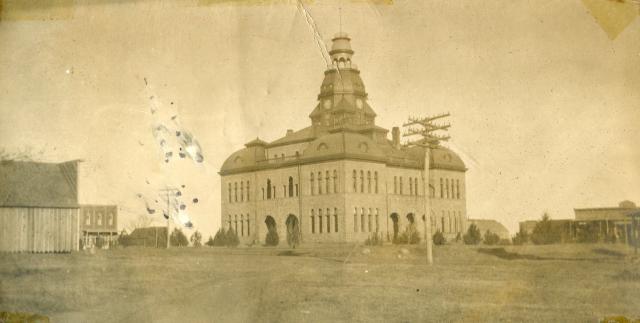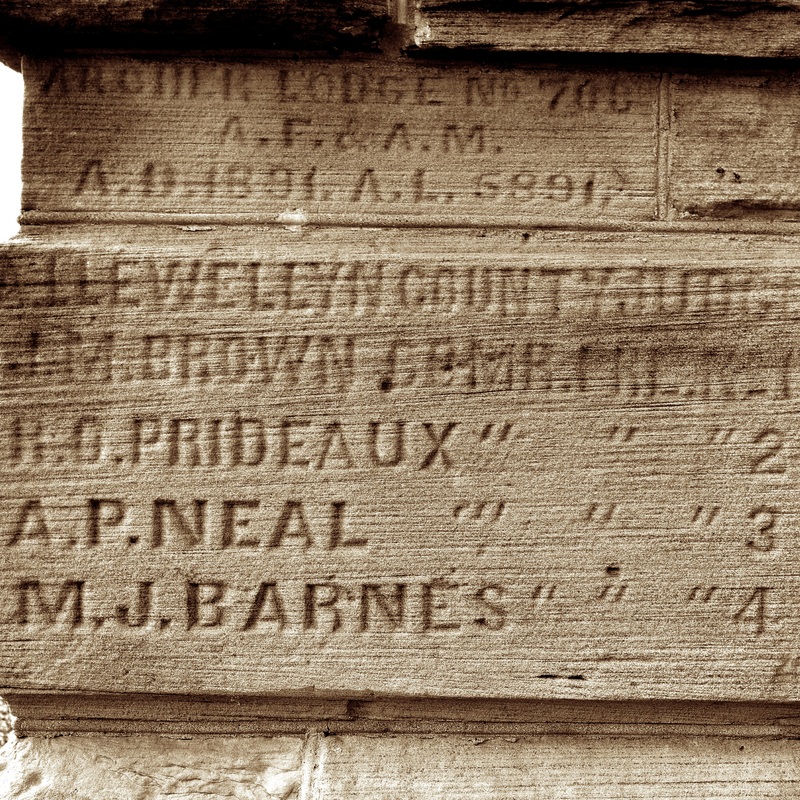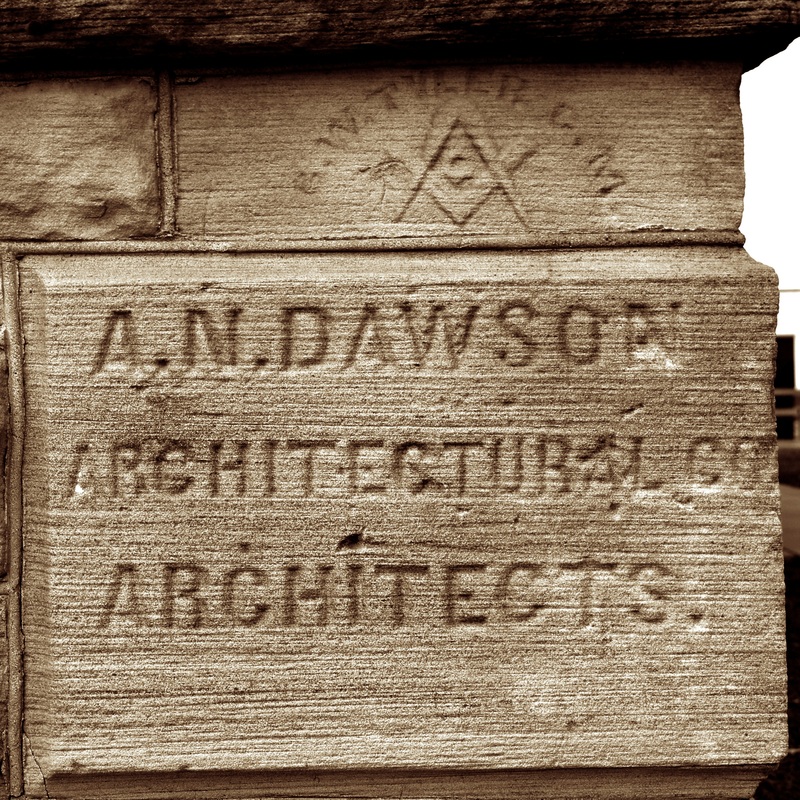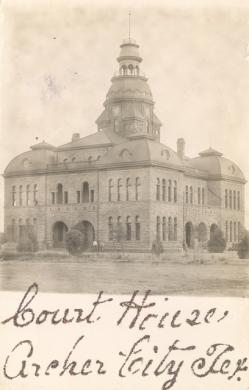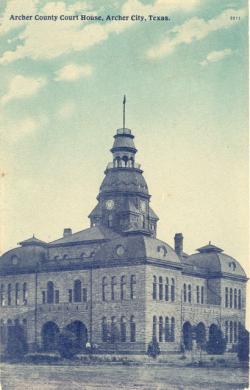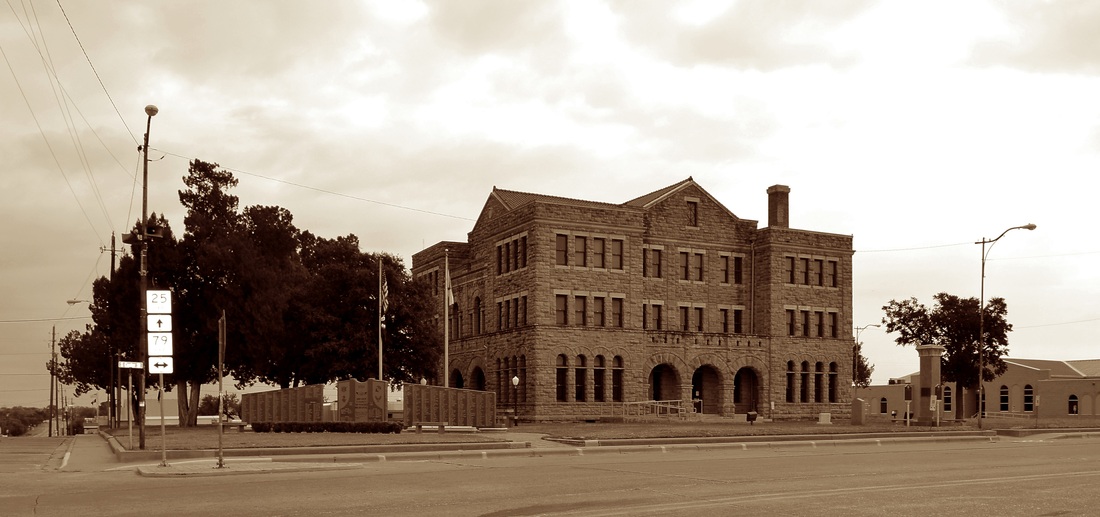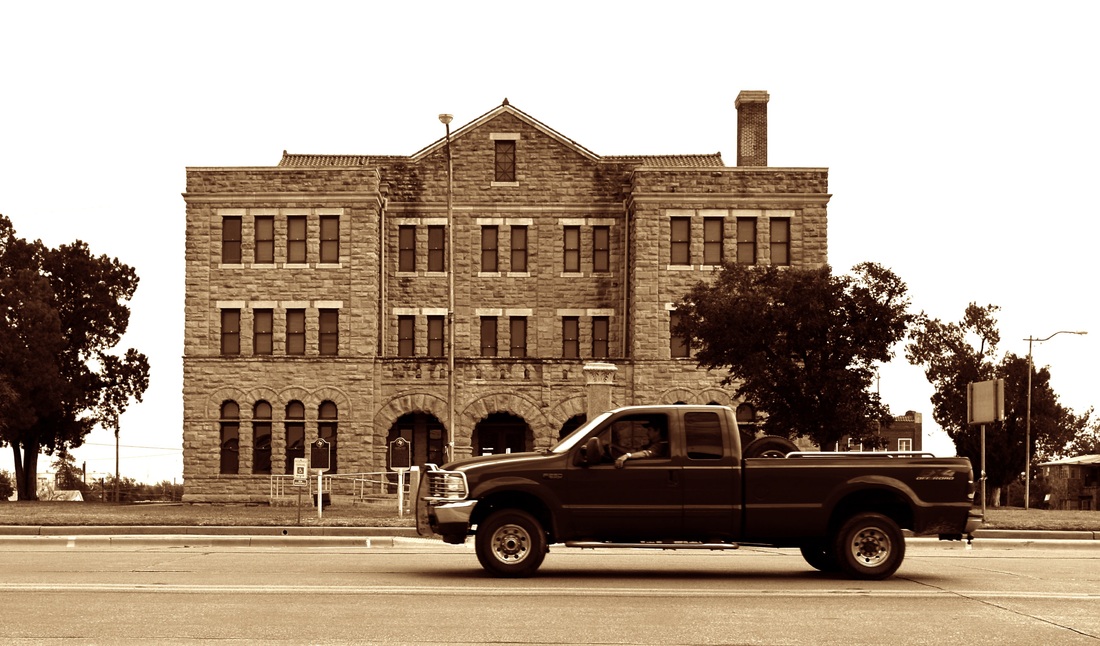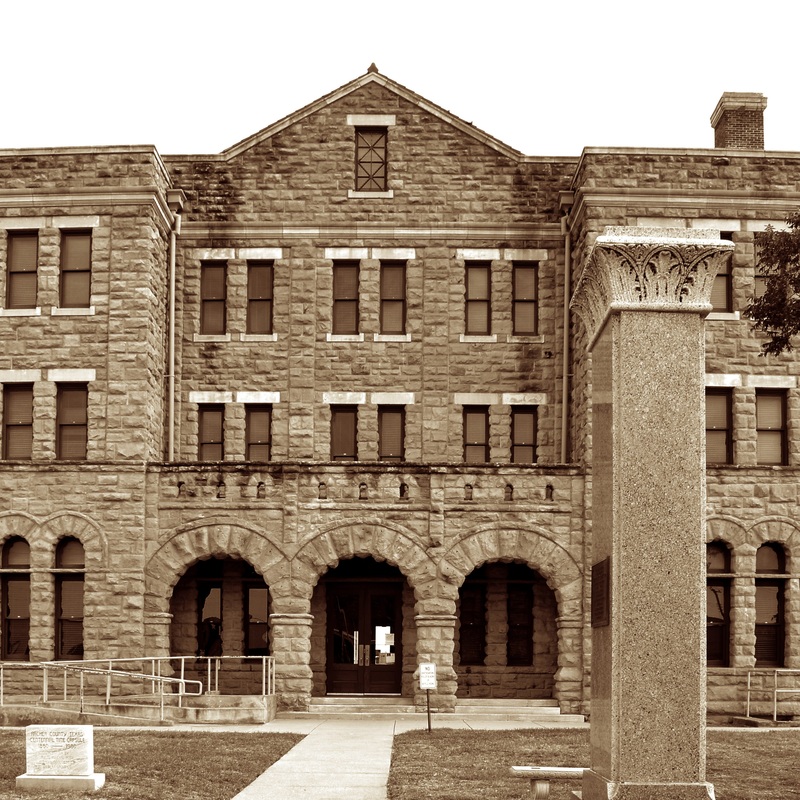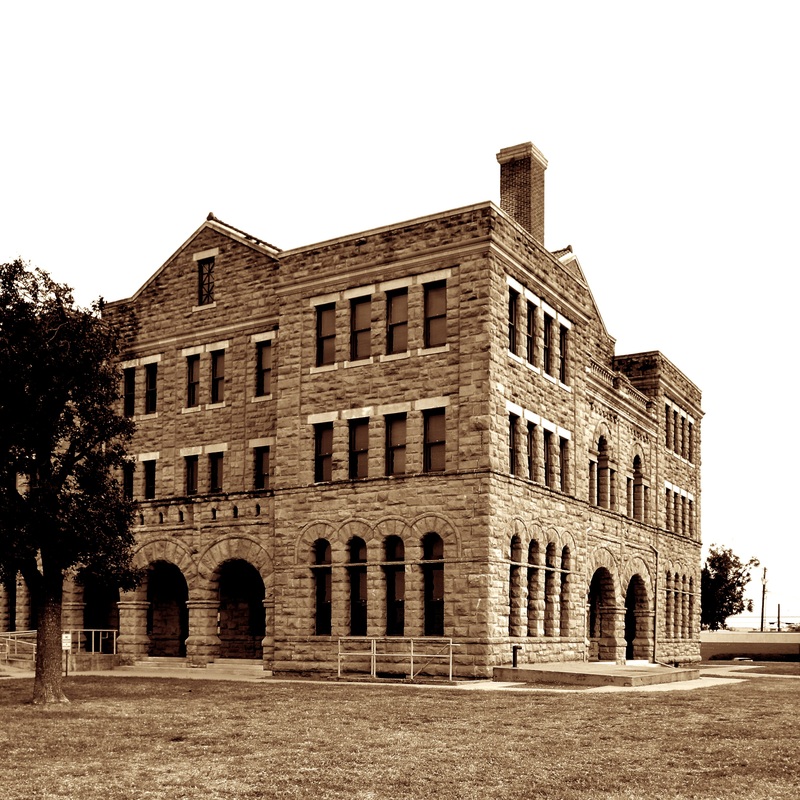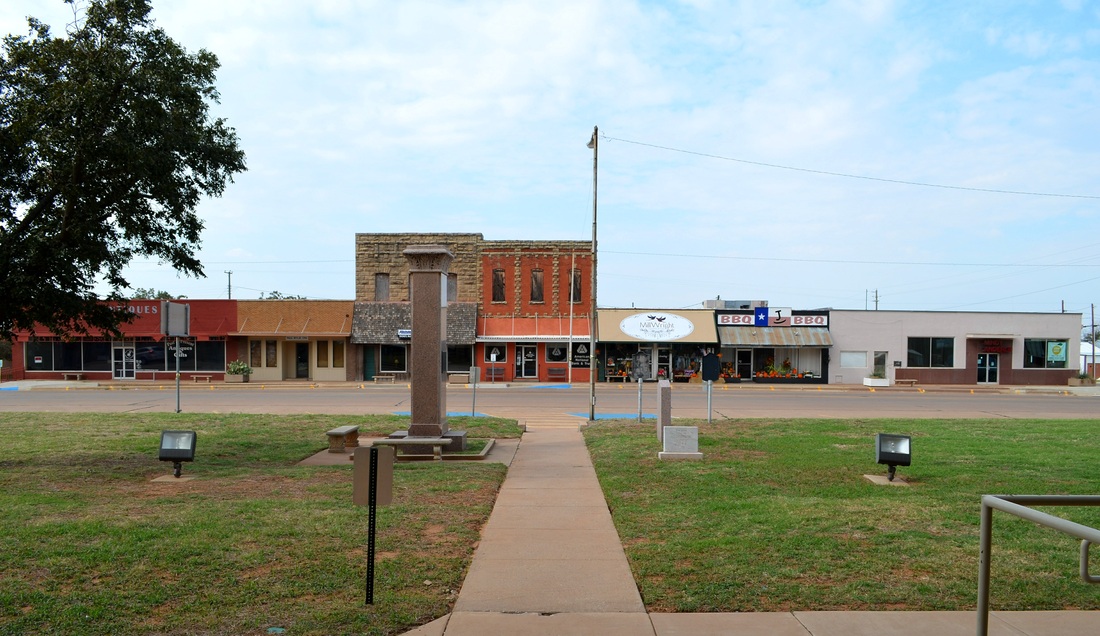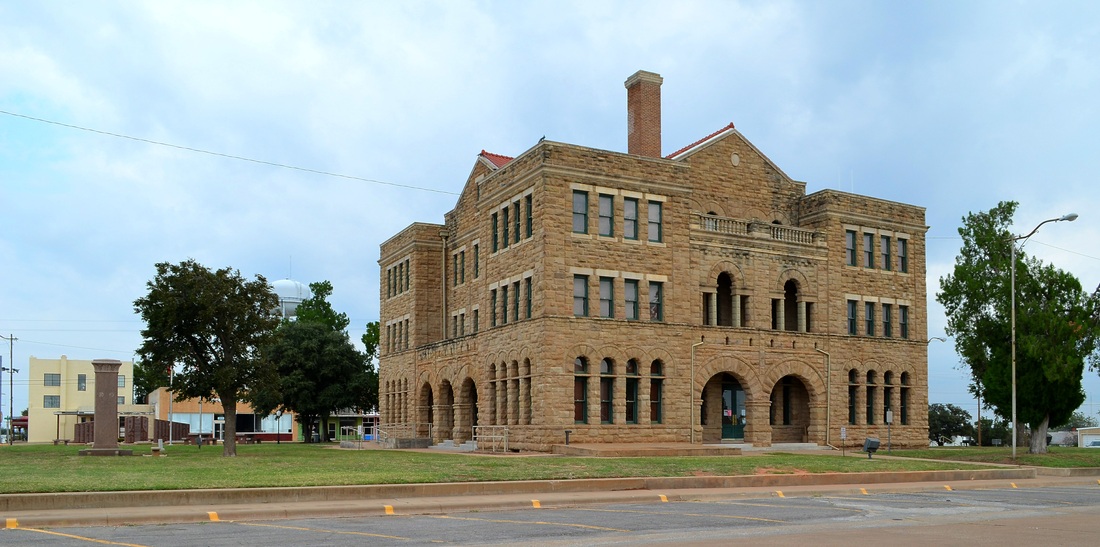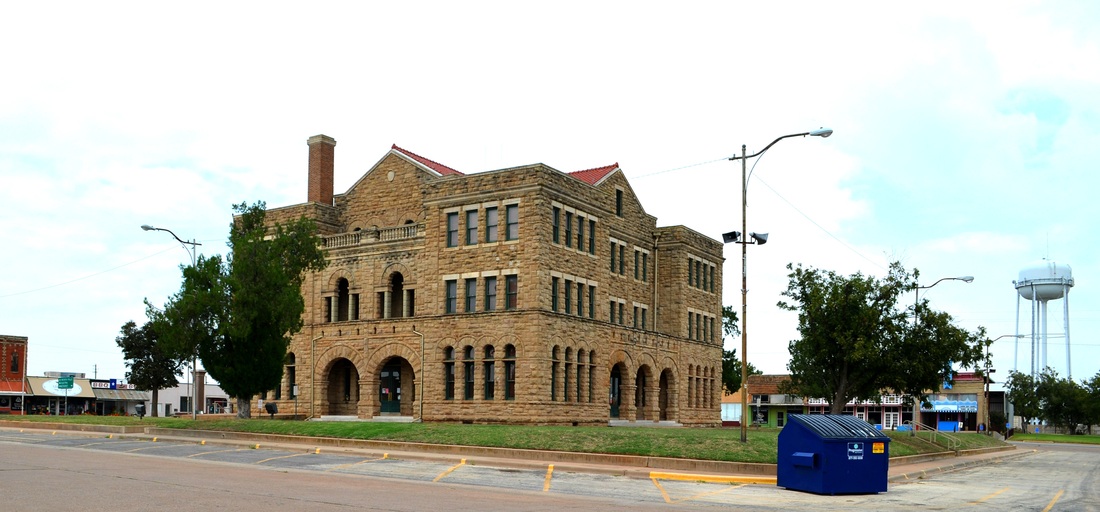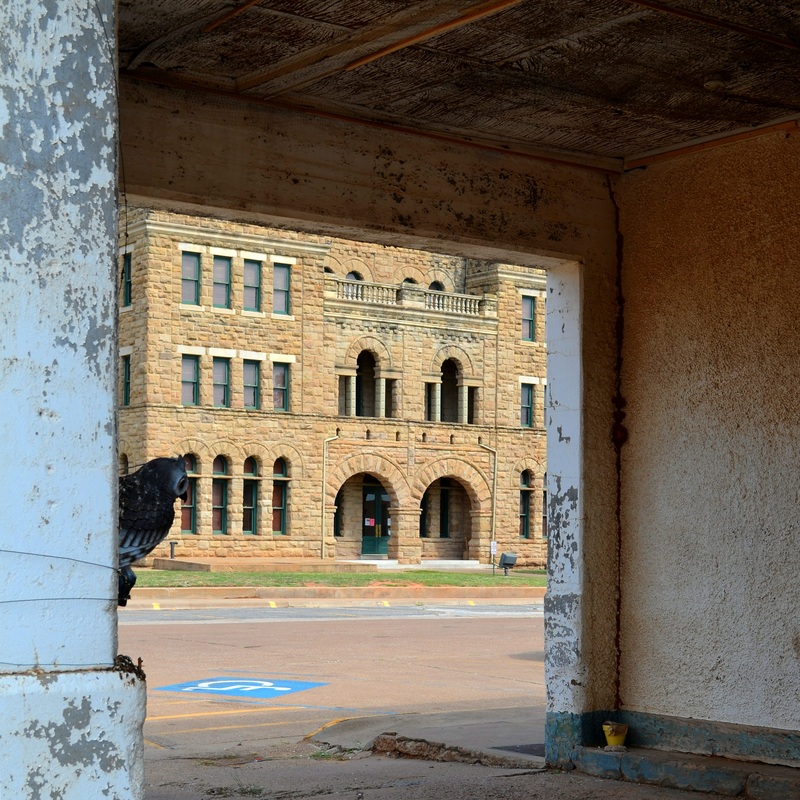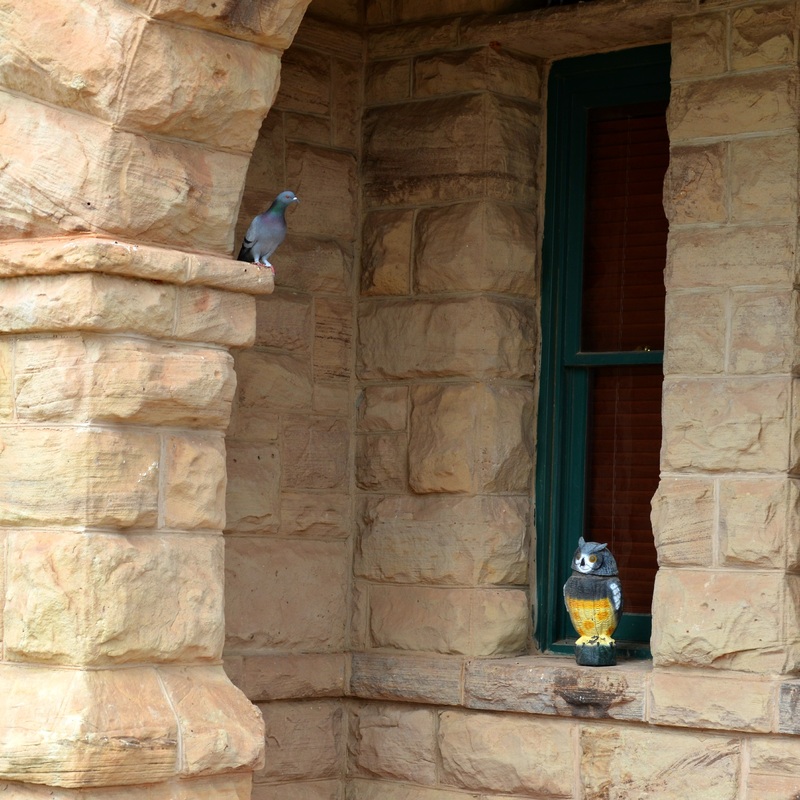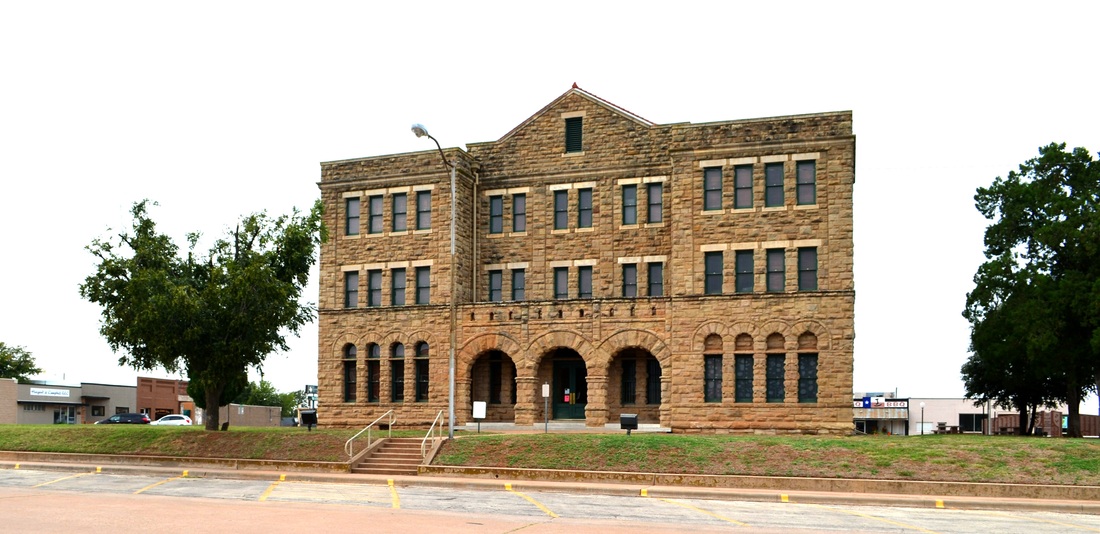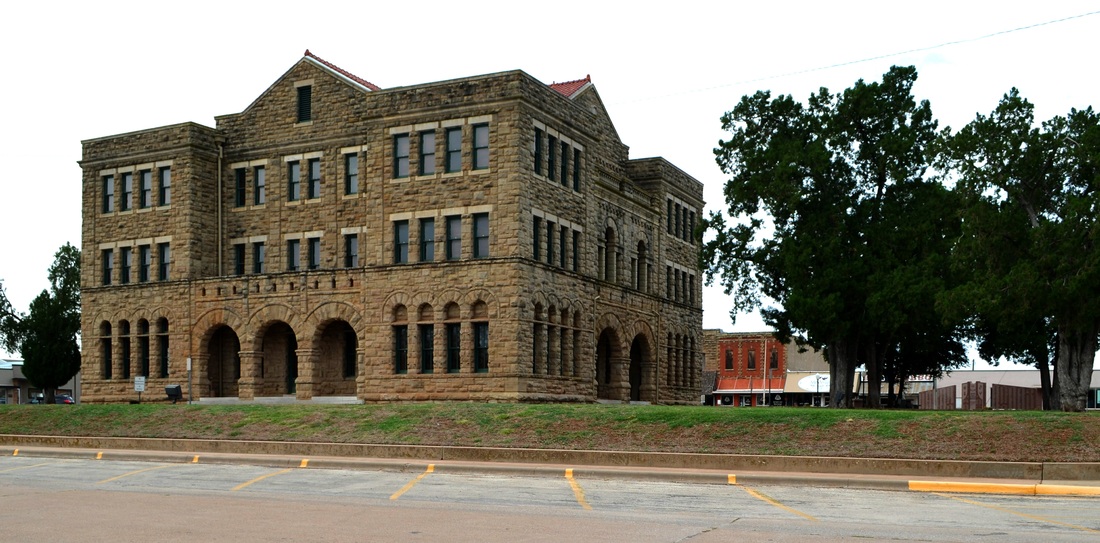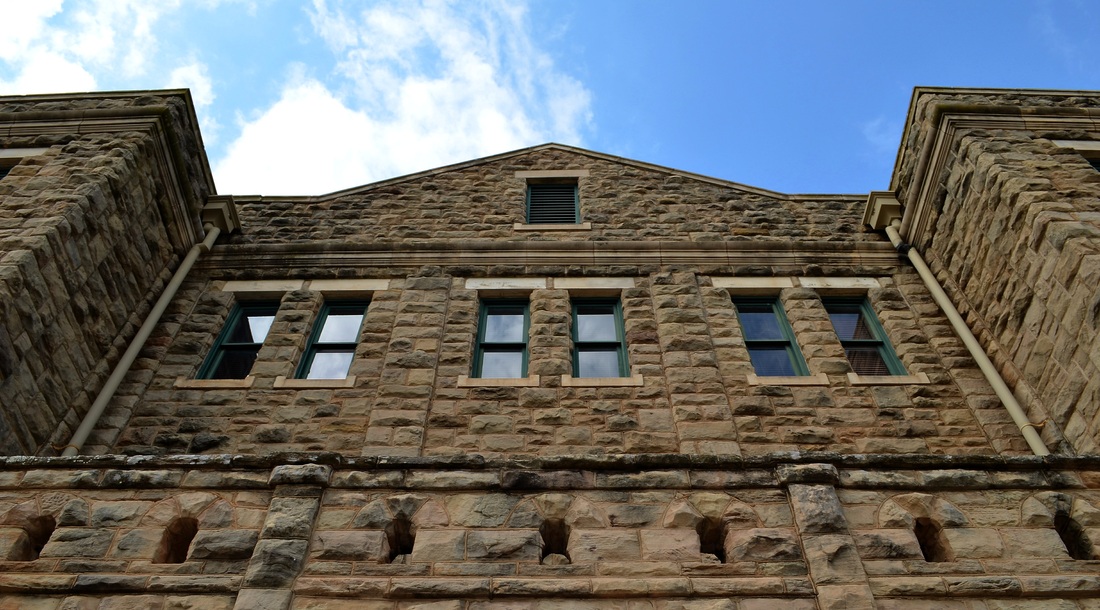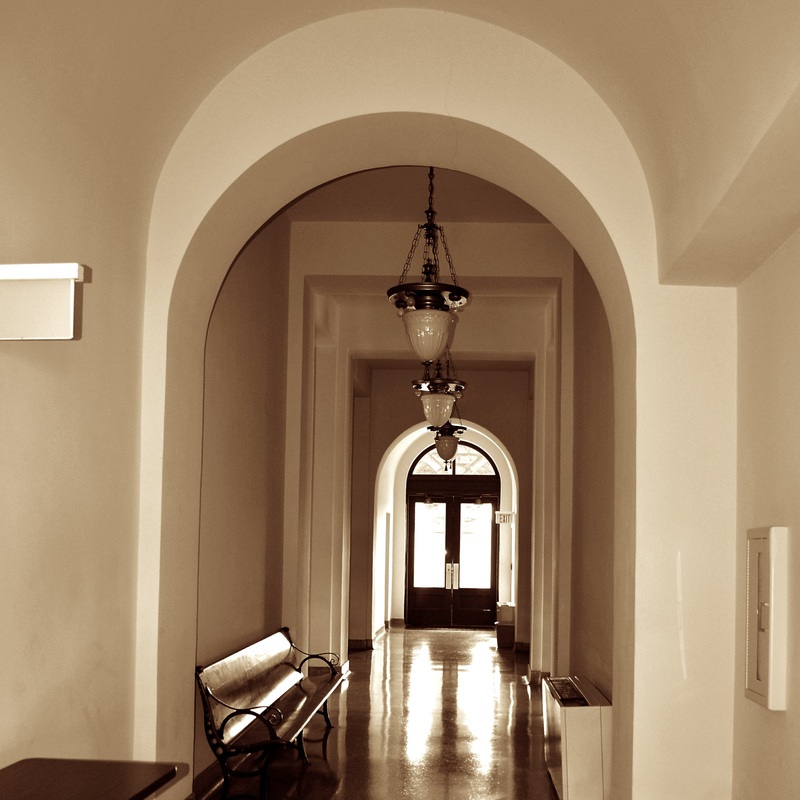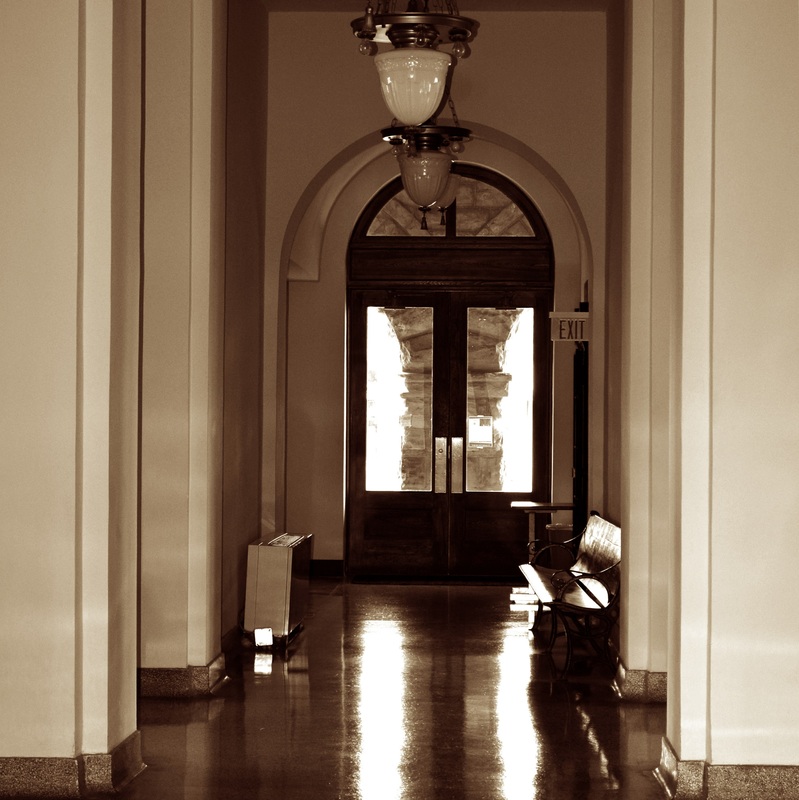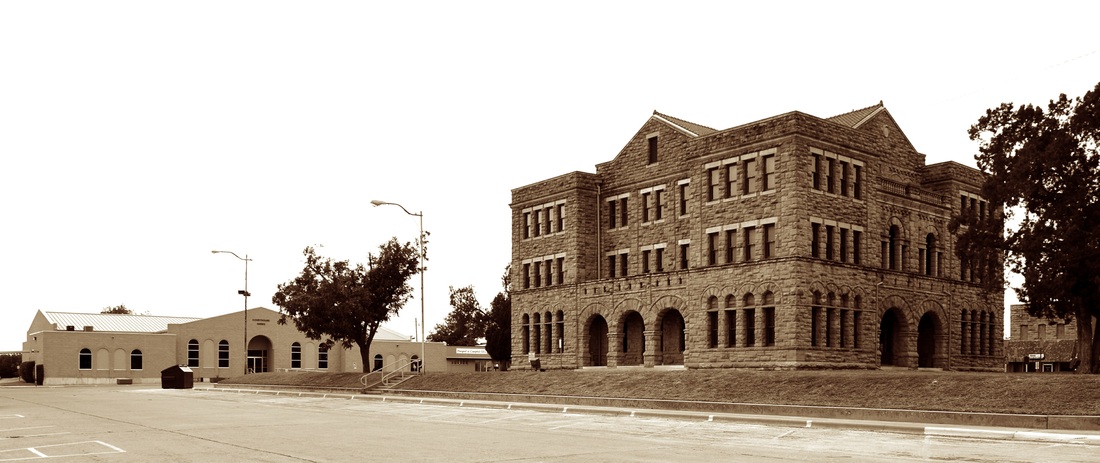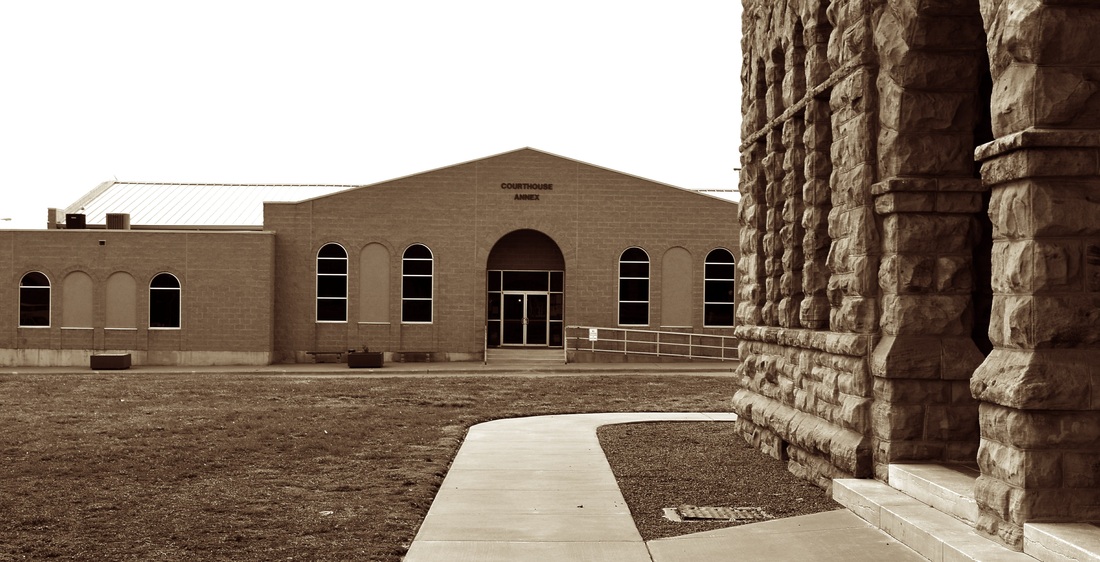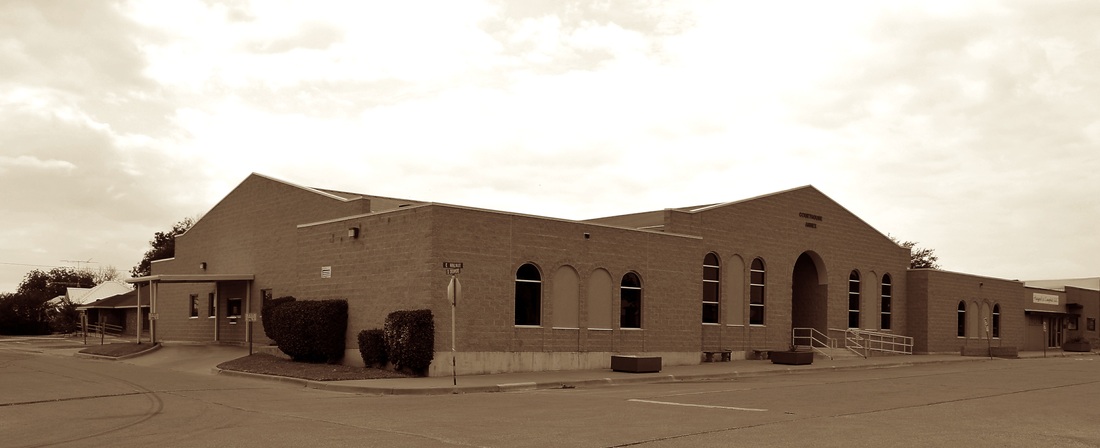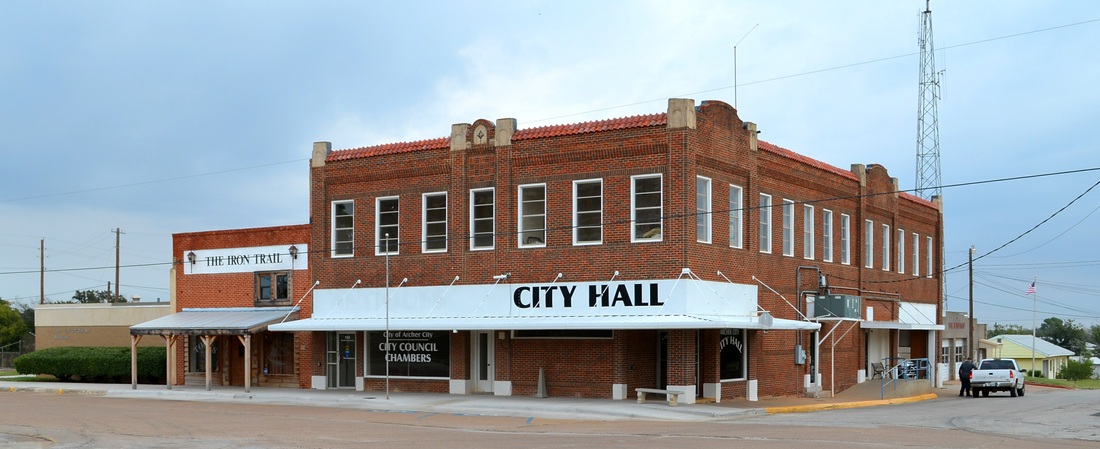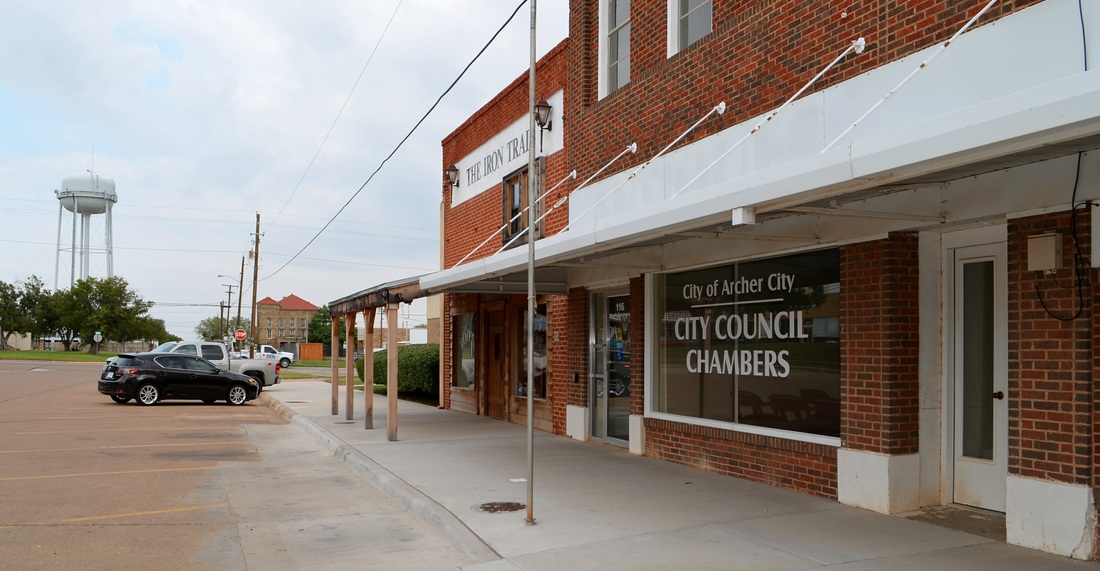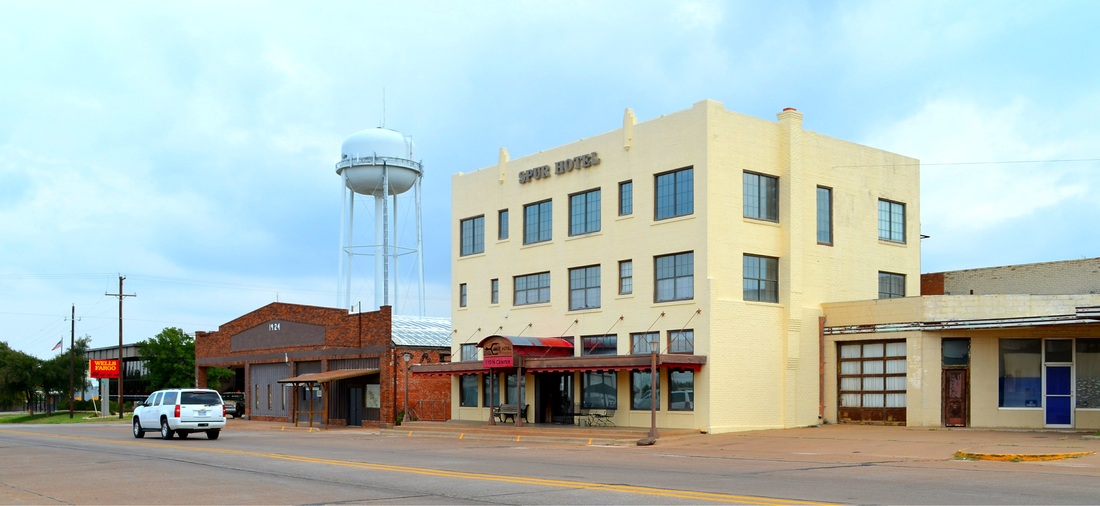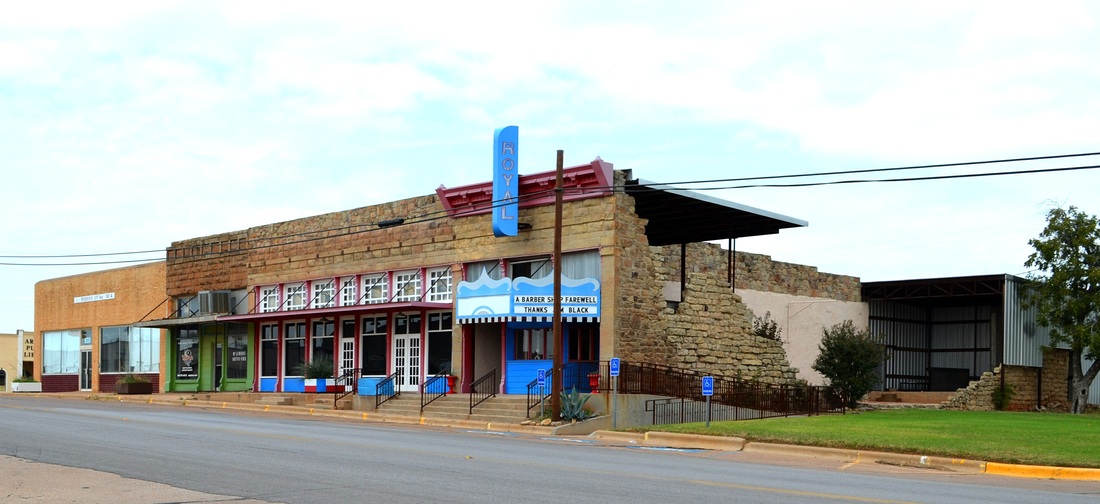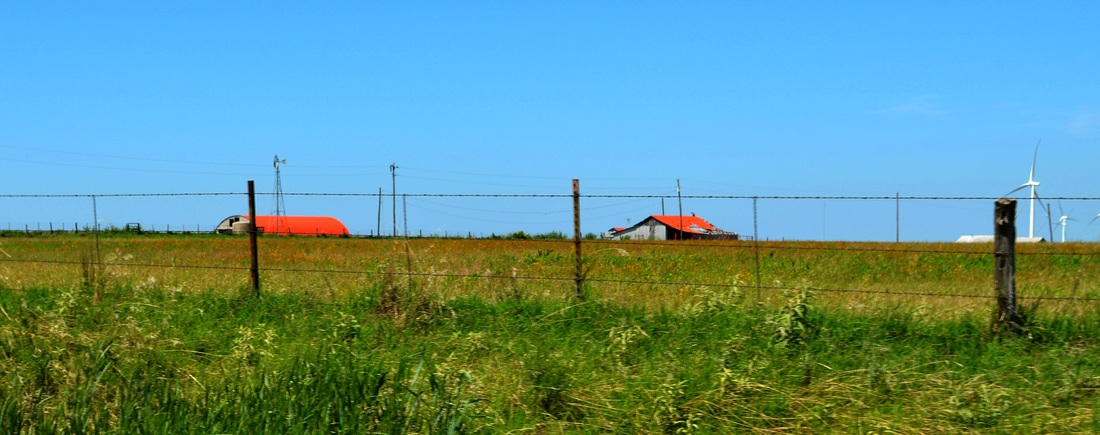218 of 254 Archer County Courthouse, Archer City, Texas. County Population: 9,054
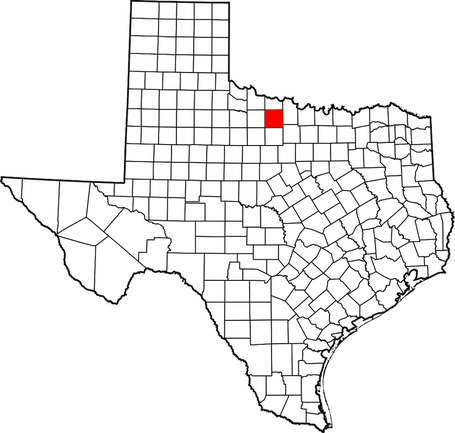 Archer County, Texas
Archer County, Texas
"Archer County is located in north central Texas, bounded on the North by Wichita County, on the west by Baylor County, on the south by Young County, and on the east by Clay and Jack counties. The county comprises 900 square miles of the Central Rolling Red Plains, Central Rolling Red Prairies, and Western Cross Timbers. The altitude ranges from 900 to 1,400 feet, the yearly rainfall averages 25.26 inches, the temperature averages range from 28° to 98° F, and the growing season lasts 220 days.
"On January 22, 1858, the Texas legislature marked off Archer County from Clay County and named it in honor of Republic of Texas commissioner Branch Tanner Archer. No settlers had yet arrived. By 1875, however, the United States Army had driven all the [native Americans] from North Texas and the area was open to settlement.
"1874 the first American settler, Dr. R. O. Prideaux, originally from England, settled on the West Fork of the Trinity River in southeastern Archer County. "In November 1879 farmers combined with the small ranchers in Archer County and presented a petition to the commissioners' court of Clay County calling for the political organization of Archer County. Larger cattle interests, bitterly opposed to organization, protested and delayed the process, but in the spring of 1880 the court ordered an election. Archer County was organized on July 27 of that year. [Archer City was designated as the county seat.]"
Monte Lewis, "ARCHER COUNTY," Handbook of Texas Online
I visited Archer County and photographed the courthouse in Archer City on Sunday, October 19, 2014.
"On January 22, 1858, the Texas legislature marked off Archer County from Clay County and named it in honor of Republic of Texas commissioner Branch Tanner Archer. No settlers had yet arrived. By 1875, however, the United States Army had driven all the [native Americans] from North Texas and the area was open to settlement.
"1874 the first American settler, Dr. R. O. Prideaux, originally from England, settled on the West Fork of the Trinity River in southeastern Archer County. "In November 1879 farmers combined with the small ranchers in Archer County and presented a petition to the commissioners' court of Clay County calling for the political organization of Archer County. Larger cattle interests, bitterly opposed to organization, protested and delayed the process, but in the spring of 1880 the court ordered an election. Archer County was organized on July 27 of that year. [Archer City was designated as the county seat.]"
Monte Lewis, "ARCHER COUNTY," Handbook of Texas Online
I visited Archer County and photographed the courthouse in Archer City on Sunday, October 19, 2014.
Archer County Courthouse 1891
"The design of the [Archer County] courthouse is the product of an architectural competition. On March 10, 1891, the Commissioners Court of Archer County ordered the publication of invitations to architects to submit plans for a new courthouse to cost not less than $25,000 nor more than $35,000. On April 16, 1891, after having examined twenty- five sets of plans and specifications, A.N. Dawson of Fort Worth, Texas, was awarded the commission to develop detailed plans and specifications. Two months later the contract between the county and the contractors, J. S. DeWees and Jacob Rath, of Throckmorton, Texas, was signed. The contract amount was $32,500. The courthouse is a good example of style incorporating Romanesque Revival design features. Ashlar masonry and Roman arches all contribute to the visual strength of the style of this temple of justice.
"The exterior walls of the courthouse are of brown quarry-faced sandstone obtained from a quarry nearby. Openings in the corner pavilions were spanned by Roman arches with strong extrados. Triple arches mark the east and west entrances while double arches appear over the north and south entrances. On the second-story, centered in the south and north elevations, round-arched openings resemble Palladian motifs; surmounting these is a balustrade. Subtle design refinements include string courses, corner pilasters, and an ornamental cornice.
"As originally constructed, each of the four corner pavilions was surmounted by a roof with a convex curvature, relieved by bull 's-eye windows. Rising from the center of the courthouse was a massive octagonal tower, with four clock faces, terminated with a cupola, all clad with sheet metal. In 1925 and 1960, the courthouse was remodeled. The tower and roofs over the corner pavilions were removed in the early alterations. At the same time, a third floor was added and some of the second story openings were modified by replacing the arches with lintels. However, the essential original character of the courthouse, on both the inside and outside, is still quite apparent."
From the National Register narrative
"The exterior walls of the courthouse are of brown quarry-faced sandstone obtained from a quarry nearby. Openings in the corner pavilions were spanned by Roman arches with strong extrados. Triple arches mark the east and west entrances while double arches appear over the north and south entrances. On the second-story, centered in the south and north elevations, round-arched openings resemble Palladian motifs; surmounting these is a balustrade. Subtle design refinements include string courses, corner pilasters, and an ornamental cornice.
"As originally constructed, each of the four corner pavilions was surmounted by a roof with a convex curvature, relieved by bull 's-eye windows. Rising from the center of the courthouse was a massive octagonal tower, with four clock faces, terminated with a cupola, all clad with sheet metal. In 1925 and 1960, the courthouse was remodeled. The tower and roofs over the corner pavilions were removed in the early alterations. At the same time, a third floor was added and some of the second story openings were modified by replacing the arches with lintels. However, the essential original character of the courthouse, on both the inside and outside, is still quite apparent."
From the National Register narrative
Archer County Courthouse 1926
"In 1926, the courthouse was dramatically remodeled by a Fort Worth architect, Elmer G. Withers. The original tower was removed and a third floor of offices was added. Due to the substantial changes and the importance of Withers, the project restored the courthouse to its 1926 appearance and configuration. Inappropriate metal windows and stone infill from the 1960s were removed. Wood windows were installed to match the 1926 design. The contemporary lowered ceiling of the courtroom was removed and the District Court balcony restored. Wood floors throughout the building were uncovered from beneath layers of vinyl tile. The mechanical, electrical, and plumbing systems were replaced, and the courthouse was made accessible to people with disabilities. The rededication celebration was held on December 31, 2004." From the Texas Historical Commission website
Archer City, in addition to being the county seat of Archer County, is best known as the home of Larry McMurtry and the model for his fictional Texas town of Thalia. Author Larry McMurtry was raised in Archer City and went on to become a successful novelist, essayist, bookseller and screenwriter. McMurtry's used bookstore, Booked Up, is located in Archer City.
